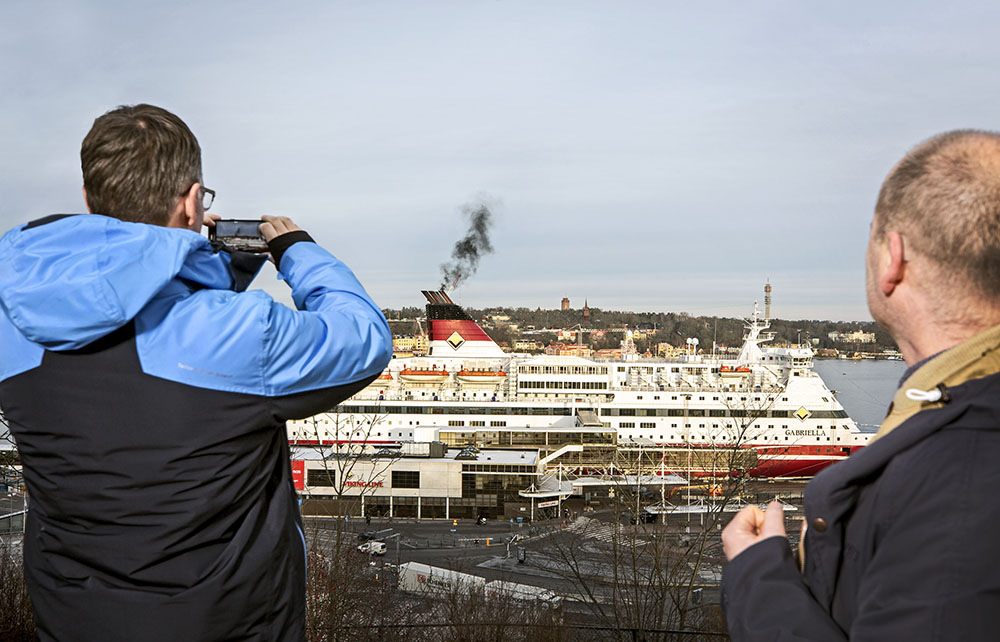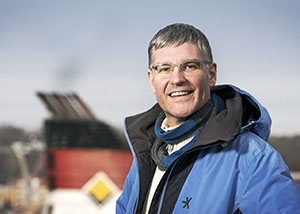System would keep ships from releasing sulfur and nitrogen oxides

Pollution from maritime vessels is largely overlooked by the media, but it plays a significant role in deteriorating air quality. Now a research team from KTH is developing new technology aimed at cleaning exhaust gases from ships, in order to prevent the emission of sulfur and nitrogen oxides.
The International Maritime Organization (IMO) enacted new limits on sulfur in heavy fuel oil used on ships operating outside designated emission control areas, from 3.5 percent to 0.50 percent m/m (mass by mass), beginning Jan. 1, 2020.
The main type of “bunker” oil for ships is heavy fuel oil, derived as a residue from crude oil distillation. Crude oil contains sulfur which, following combustion in the engine, ends up in the atmosphere. Sulfur oxides (SOx) are known to be harmful to human health, causing respiratory symptoms and lung disease. Sulfur oxides also lead to acid rain, which harms crops, forests and aquatic species, and contributes to the acidification of the oceans.
“Heavy fuel oil is a dirty, sulfur-rich and cheap fuel,” says KTH researcher Christophe Duwig. This most common propellant for boats is so viscous that it must be heated before use. "Ships operating in the ports release harmful compounds into the air in the center of the cities."
In collaboration with Klas Engvall in the Department of Chemical Engineering, Duwig’s research team is working on a gas cleaning process for marine application. The process binds sulfur and nitrogen oxides to particles, hence removing them from the gas. The residual product can be used as fertilizer; it is "stable and compact, and it can be stored clean and risk-free on ships,” he says.
“Ideally, we do not want cheap fuel to be used at all, but we have to be realistic: a ship has a lifespan of 40 years. The transition to new fuels is being carried out gradually, and in the meantime we must find solutions.”
Through the International Convention for the Prevention of Pollution from Ships (MARPOL), shipping companies are now forced to install flue gas treatment devices on their vessels, in order to reduce sulfur oxide emissions.

But Duwig says this method will not suffice over the long term. The solution being developed at KTH handles sulfur and nitric oxide emissions at the same time – something that, he says, no current technology is capable of doing.
The basic principle is to convert harmful gas molecules into particles. These particles consist of ammonium nitrate from nitrogen oxides and ammonium sulfate from sulfur oxides.
Ammonium nitrate and sulfate are solid salts which can be removed by filtration or centrifugation. The ammonium salt can then be used as fertilizer in, for example, agriculture. The chemical reactions that enable the process are oxidation with ozone and nitrate formation by an acid/ammonia reaction.
To enable this process, a new concept for mixing of ozone in the exhaust gases will be analyzed under well-controlled conditions and high mixing speed.
Simulations of the technology have delivered sufficient information for the team to take the next step: they’re building facilities for lab tests, and in the next five years they expect to begin a small-scale pilot installation onboard a ship. A large-scale prototype for removal of both sulfur and nitrogen oxide is expected in about 10 years.
The research group also includes Lars Pettersson at KTH's Department of Chemical Engineering and Marc Sacie, PhD student at the Department of Engineering Mechanics.
Katarina Ahlfort/David Callahan
Photos: Håkan Lindgren
